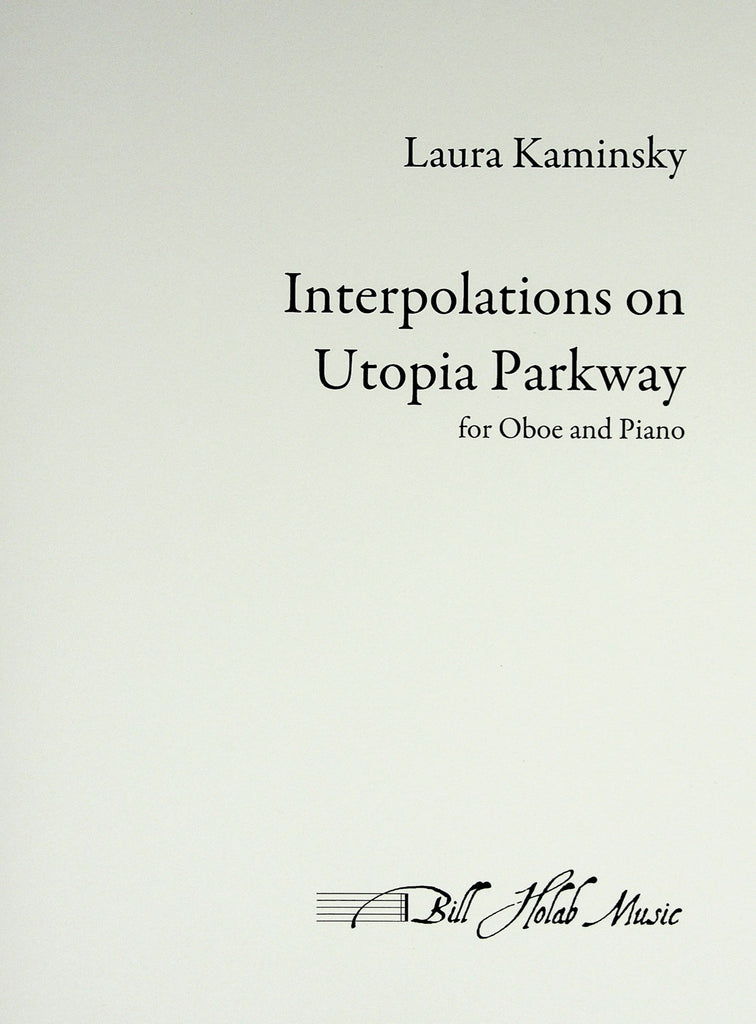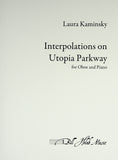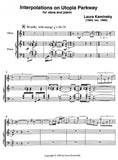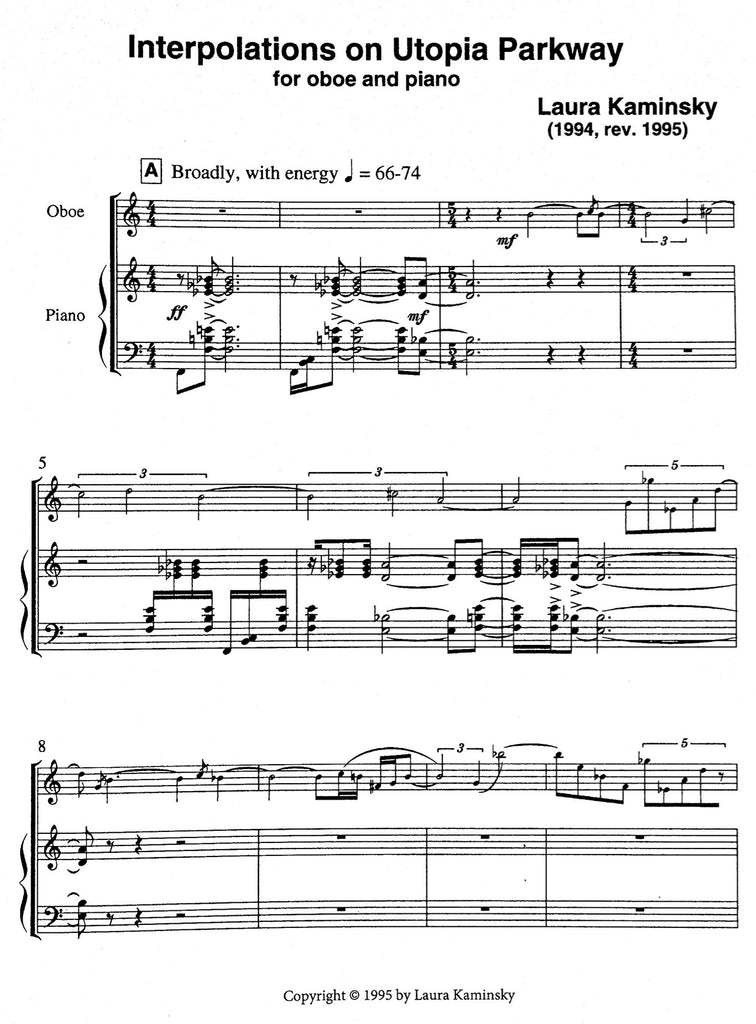Interpolations on Utopia Parkway - OB/PN
Composer: Kaminsky, Laura
Publisher: Bill Holab Music
Edition: 70072
$25.00
Interpretations on Utopia Parkway
for oboe and piano
by Laura Kaminsky - American composer
commissioned by oboist Matt Sullivan
with support provided by
Boosey & Hawkes/Buffet Crampon
In our culture we define something not only by what it is, but also by what it is not, by what is central and primary to the whole as well as by what is a disruption or deviation from it, by what is in the set and what is outside it. There is a notion of how something is meant to be and a desire to exert control to make it so. Things which are interpolated or interjected into a process or plan or system are considered extraneous, problematic and disruptive, and the cultural norm is to "get back on track" as soon as possible.
In Ghana, where I lived for a year, this was not so. Whatever was happening at a given moment was primary - and, therefore, fine - and life - and art - seemed to gain structure and meaning merely by happening; structure was born as events - or music or dance or a story - unfolded, and interjections, interpolations and even complete interruptions are considered integral to the whole. Even now, long after my return to the U.S., I remain fascinated, and, I think, changed by these cultural differences in how perception is framed and how the unfolding of one's reality is understood.
As for Interpolations on Utopia Parkway (which was written between March and June 1994 and
revised in Spring, 1997): I sat in many a traffic jam under the exit sign for the Utopia Parkway (more than just a road name, it is too rich a metaphor!) and thought about these issues both in the context of how I lead my life and then in a musical way. And from these ruminations came the piece. Interpolations is built around four sets of musical material which interrupt Or are interpolated into each other, making for a whole. These materials, or sets, are: the opening call and response of forceful piano chords and lyrical oboe melody; a quixotic and unruly canon for the two instruments; a jazz-like section with a 7-against-4 walking bass for piano supporting the oboe's jagged and explosive utterances; and, finally, an expressive piano solo. So, the question becomes "what is the structure of the piece? What is organic or integral to its process and what is a deviation from it? How do the interpolations of the various musical materials create a meaningful form?"
Special thanks to Matt , Kirt, and Sara, Boosey & Hawkes, Nora Post, The New School, and to Amy and EP.
for oboe and piano
by Laura Kaminsky - American composer
commissioned by oboist Matt Sullivan
with support provided by
Boosey & Hawkes/Buffet Crampon
In our culture we define something not only by what it is, but also by what it is not, by what is central and primary to the whole as well as by what is a disruption or deviation from it, by what is in the set and what is outside it. There is a notion of how something is meant to be and a desire to exert control to make it so. Things which are interpolated or interjected into a process or plan or system are considered extraneous, problematic and disruptive, and the cultural norm is to "get back on track" as soon as possible.
In Ghana, where I lived for a year, this was not so. Whatever was happening at a given moment was primary - and, therefore, fine - and life - and art - seemed to gain structure and meaning merely by happening; structure was born as events - or music or dance or a story - unfolded, and interjections, interpolations and even complete interruptions are considered integral to the whole. Even now, long after my return to the U.S., I remain fascinated, and, I think, changed by these cultural differences in how perception is framed and how the unfolding of one's reality is understood.
As for Interpolations on Utopia Parkway (which was written between March and June 1994 and
revised in Spring, 1997): I sat in many a traffic jam under the exit sign for the Utopia Parkway (more than just a road name, it is too rich a metaphor!) and thought about these issues both in the context of how I lead my life and then in a musical way. And from these ruminations came the piece. Interpolations is built around four sets of musical material which interrupt Or are interpolated into each other, making for a whole. These materials, or sets, are: the opening call and response of forceful piano chords and lyrical oboe melody; a quixotic and unruly canon for the two instruments; a jazz-like section with a 7-against-4 walking bass for piano supporting the oboe's jagged and explosive utterances; and, finally, an expressive piano solo. So, the question becomes "what is the structure of the piece? What is organic or integral to its process and what is a deviation from it? How do the interpolations of the various musical materials create a meaningful form?"
Special thanks to Matt , Kirt, and Sara, Boosey & Hawkes, Nora Post, The New School, and to Amy and EP.





Share this item: